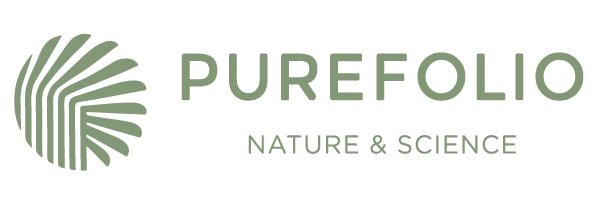Content
- Stage 4: Performing At Peak Productivity
- How to use Trello: Organization and productivity for beginners
- Environmental, Health, and Safety
- Collaborative On-Line Research and Learning
- How to help your team through the stages of group development
- Stage #2 — The Storming Stage
- Leadership Trait: Responsibility
- tips on how to facilitate proper group development
This is a concept that psychologist Bruce Tuckman came up with to properly understand the progress of various teams and the development of key contributors. Alignment Get your people in the same mindset with OKR goals and 1-on-1 meetings. During the Ending Stage, some team members may become less focussed on the team’s tasks and their productivity may drop.

In the adjourning stage, most of the team’s goals have been accomplished. The emphasis is on wrapping up final tasks and documenting the effort and results. As the work load is diminished, individual four stages of group development members may be reassigned to other teams, and the team disbands. There may be regret as the team ends, so a ceremonial acknowledgement of the work and success of the team can be helpful.
Stage 4: Performing At Peak Productivity
In addition to focusing on the scope of the team’s purpose and how to approach it, individuals in the formation stage are also gathering information and impressions about each other. Since people generally want to be accepted by others, during this period they usually avoid conflict and disagreement. Team members may begin to work on their tasks independently, not yet focused on their relationships with fellow team members.

Members attempt to become oriented to the tasks as well as to one another. This is also the stage in which group members test boundaries, create ground rules, and define organizational standards. Discussion centers on defining the scope of the task, how to approach it, and similar concerns. To grow from this stage to the next, each member must relinquish the comfort of non-threatening topics and risk the possibility of conflict. At this stage, team leaders can begin delegating tasks easily and seeing growth within their teams. Team leaders need to ensure they address any major changes to reduce the possibility of digressing to earlier stages.
How to use Trello: Organization and productivity for beginners
Avoidance usually makes the problem grow until it blows up. Managers think they can take a team from forming to performing without any of the dirty work that comes with the Storming. Every team MUST go through the stages to reach the Performing stage. There is no secret shortcut or magic fairy dust that can get your team to the Performing stage instantly. Team members buy into the process and begin to work together effectively.
- The team must know that despite all difficulties, they are still delivering and making progress.
- Timothy Biggs suggested that an additional stage be added of “norming” after “forming” and renaming the traditional norming stage “re-norming”.
- Money as a reward would be a motivator otherwise a hygiene factor.
- She proposes a clear schedule and takes charge of contacting the local store to see what supplies they can get here, and what supplies they may need to go to the city for.
The forming, storming, norming and performing model of team development. After the team members have moved past the forming, storming, and norming stages of group development, they can finally produce work and rely on team members for support. Their working styles and skills complement one another, and they rely on the each other to perform tasks more efficiently.
Environmental, Health, and Safety
On a remote team, you need to be more thoughtful about the tools and the processes that you use to identify and deal with disagreements. Your role here is to act as the team’s champion, securing resources and minimizing roadblocks in the organization. Your participation should be much more focused on how the team is tackling problems rather than solving the problems for them. You will still raise issues, ask questions, and challenge approaches, but more to validate the team’s conclusion than to drive it. Leadership belongs to everyone on the team, and the team owns its results.
Think of this phase like when you move in with a friend you’ve never lived with before, and you slowly start to notice the little things about them that get on your nerves. While some teams think they can skip this stage, it’s important to dive into it with the expectation that there may be some conflict. Sales LeadersFellow https://globalcloudteam.com/ helps Sales leaders run productive 1-on-1s, team meetings, forecasting calls, and coaching sessions. ProductFeatures OverviewSee how high-performing teams are using Fellow to level-up their meeting and productivity habits. If you’ve asked team members to update progress documents weekly, check to make sure it’s being done.
Collaborative On-Line Research and Learning
As with all the stages it is important to recognize that forming occurs whenever a new team is created. In a typical Rizing engagement teams are formed and dissolved throughout the project lifecycle hence the ongoing need to provide leadership and guidance. As issues are addressed and resolved, the team’s morale begins to increase. Trust builds, productivity rises and the team begins working together toward the common goal. At this point, the leader should draw out the opinions of all members and leverage the diversity of the team.

If group members are able to evolve to stage four, their capacity, range, and depth of personal relations expand to true interdependence. In this stage, people can work independently, in subgroups, or as a total unit with equal competencies. After all, their ability to overcome obstacles and achieve their goals is a reflection of a management job well done. Every team has different needs when it comes to their development. Which means, you may experience these stages in sequential order, or find yourself in a loop with one or more of the stages outlined above. As you learn about their progress, you ask them questions about their processes and notice how they collaboratively provide constructive answers.
How to help your team through the stages of group development
In this stage typically team members are ready to leave causing significant change to the team structure, membership, or purpose and the team during the last week of class. While the group continues to perform productively they also need time to manage their feelings of termination and transition. Tuckman’s original work simply described the way he had observed groups evolve, whether they were conscious of it or not. In CORAL, the real value is in recognizing where a team is in the developmental stage process, and assisting the team to enter a stage consistent with the collaborative work put forth. In the real world, teams are often forming and changing, and each time that happens, they can move to a different Tuckman Stage. A group might be happily Norming or Performing, but a new member might force them back into Storming, or a team member may miss meetings causing the team to fall back into Storming.
